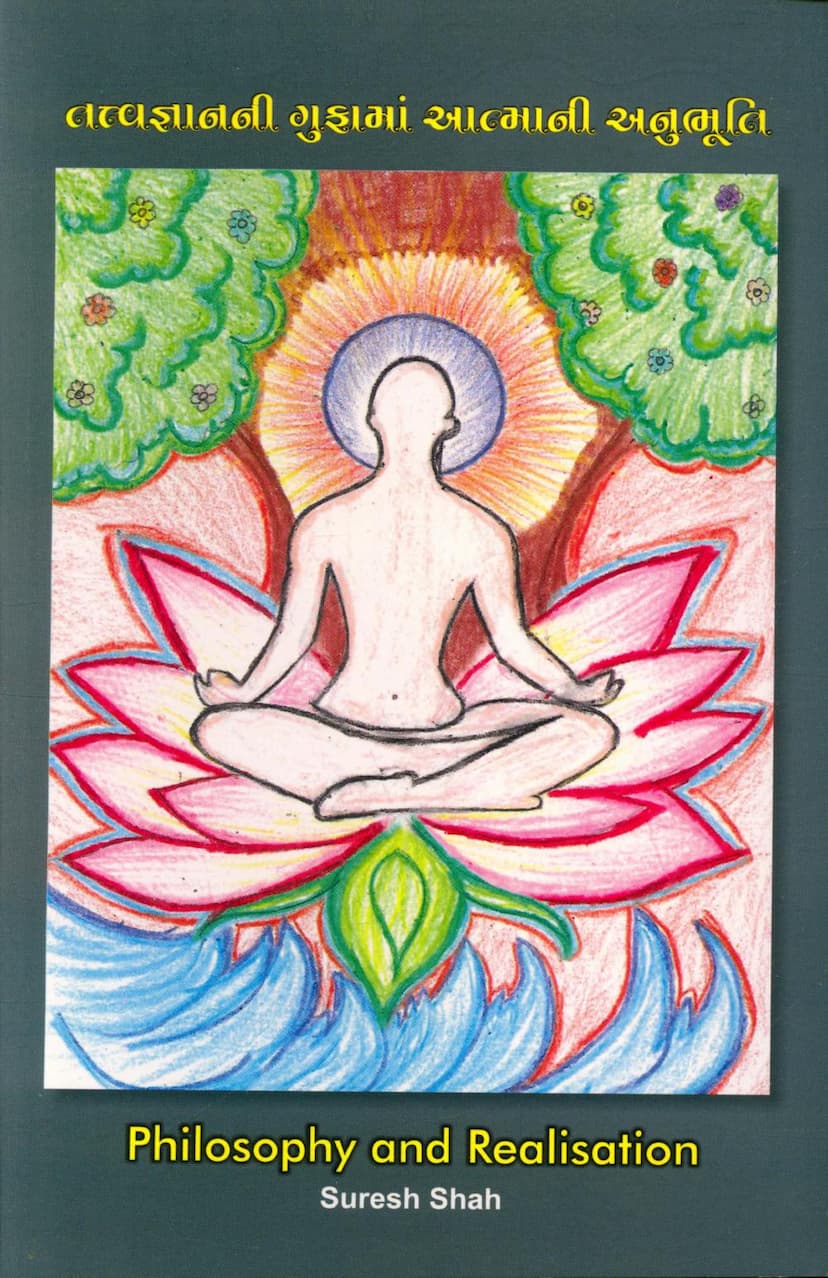Tattvagyanni Gufama Aatmani Anubhuti
Added to library: September 2, 2025

Summary
This Jain text, titled "Tattvagyanni Gufama Aatmani Anubhuti" (Realization of the Soul in the Cave of Metaphysics) by Suresh Shah, is a comprehensive exploration of philosophical and spiritual concepts, primarily within the framework of Jainism, but also drawing comparisons with Western and Indian philosophies. The book aims to guide the reader towards self-realization and liberation.
Here's a breakdown of its key themes and content:
Core Purpose: The book's central aim is to explain the path to understanding the soul (Atma) and achieving liberation (Moksha). It emphasizes that true spiritual realization comes through study, contemplation, and adherence to the teachings of enlightened masters, particularly Sadguru Shrimad Rajchandra.
Structure and Content:
-
Philosophical Foundations:
- Western Philosophy: The book begins by introducing Western philosophy, tracing its origins from ancient Greece. It discusses key thinkers like Socrates, Plato, Aristotle, Descartes, Kant, and Hume, highlighting their contributions to understanding reality, knowledge, and existence. It notes the rational and logical basis of Western thought, often contrasting it with Eastern philosophies.
- Indian Philosophy: This section delves into the diverse schools of Indian philosophy, including Vedanta, Sankhya, Yoga, Nyaya, Vaisheshika, Buddhism, and Charvak. It explains their core tenets regarding the nature of reality, the soul, the universe, and the path to liberation. It emphasizes the Indian philosophical emphasis on logic, anekantavada (multi-faceted reality), and faith.
- Jain Philosophy: This is the core of the book. It presents the fundamental principles of Jainism, attributing its origin to the Tirthankaras, starting with Rishabhdev and culminating with Mahavir Swami. Key Jain concepts covered include:
- Anekantavada (Doctrine of Manifold Aspects): The understanding that reality is complex and can be viewed from multiple perspectives.
- Syadvada (Doctrine of Relativity): A logical framework that allows for conditional statements about reality.
- Saptabhanginaya (Seven-Fold Predication): The application of Syadvada to describe any entity from seven different viewpoints.
- The Six Elements (Dravyas): Jiva (soul), Pudgala (matter), Dharma (medium of motion), Adharma (medium of rest), Akash (space), and Kala (time).
- Panchastikaya: A further categorization of these elements.
- Navatattva (Nine Fundamentals): Jiva, Ajiva, Punya (merit), Pap (demerit), Ashrav (influx of karma), Samvar (stoppage of karma), Nirjara (shedding of karma), Bandh (bondage), and Moksha (liberation).
- Six Principles of the Soul: The existence of the soul, its immortality, its role as an actor and experiencer of karma, the possibility of liberation, and the means to achieve it.
- Four Yogas: Dharmakathanuyoga, Dravyanuyoga, Karnanuyoga, and Charananuyoga.
- Fourteen Stages of Spiritual Progress (Gunasthanak): The journey from delusion (Mithyatva) to perfect knowledge and liberation (Kevalgyan).
- The eighteen sins (Ashtadasha Papasthanak): Actions that lead to karmic bondage.
- Twelve Contemplations (Dvaadasha Bhavana): Meditative reflections on the nature of reality, impermanence, and the path to liberation.
- Six Lessions (Shat Lishya): The different mental states that influence one's karmic experience.
- The importance of Samyakdarshan (Right Faith/Perception): The foundational step towards spiritual realization.
-
Atma Siddhi Shastra (Translation and Commentary):
- A significant portion of the book is dedicated to the Atma Siddhi Shastra by Sadguru Shrimad Rajchandra. The author, Suresh Shah, presents a Gujarati commentary and an English translation of this seminal work.
- Atma Siddhi aims to clarify the nature of the soul and the path to its realization. It addresses common doubts and misconceptions about the soul's existence, its immortality, its agency, and the process of liberation.
- The text uses a dialogue format between a disciple and a guru to explore these questions, systematically addressing the disciple's doubts about the soul's visibility, its connection to the body, its actions, the concept of karma, the possibility of liberation, and the means to achieve it.
- The commentary emphasizes that true spiritual progress requires renouncing ego, blind adherence to dogma (Matarth), and instead embracing the guidance of an enlightened guru. It highlights the importance of detachment, compassion, equanimity, and sincere effort.
-
Sadguru's Guidance:
- The book places immense importance on the role of an enlightened Guru (Sadguru) as a guide on the spiritual path. It states that the guru's teachings are essential for dispelling ignorance and for achieving self-realization, especially in the current era.
- The author's personal journey and deep reverence for Shrimad Rajchandra are evident throughout the text.
-
Practical Application:
- The book provides a "kit" for the journey towards liberation, outlining essential principles and practices. It encourages the reader to cultivate virtues like non-violence, truthfulness, detachment, and devotion.
- It emphasizes that the path is not about mere ritualistic adherence but about understanding the underlying principles and applying them to one's life with sincerity and consistent effort.
Overall Message: "Tattvagyanni Gufama Aatmani Anubhuti" serves as a guide for those seeking spiritual enlightenment. It underscores the universal truths embedded in Jain philosophy, particularly Shrimad Rajchandra's teachings on the soul's nature and the path to liberation. The book encourages a disciplined, thoughtful, and humble approach to spirituality, emphasizing the indispensable role of an enlightened guru in achieving the ultimate goal of self-realization and freedom from suffering. The author's effort is to make profound spiritual concepts accessible to a wider audience, bridging the gap between ancient wisdom and modern understanding.